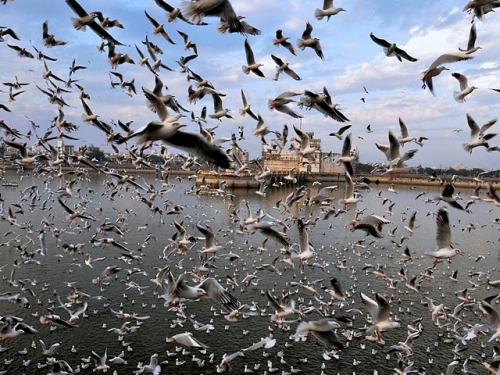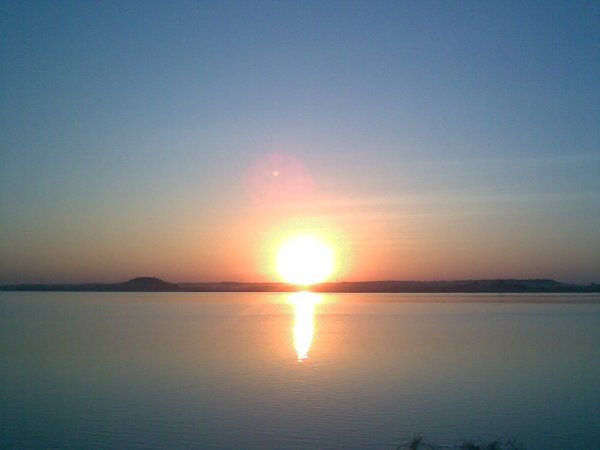Navratri 2011 Update
Summair sports club Navratri 2011
Navratri Festival 28 Sept to 6 Oct 2011
Posted in Jamnagar
| Check list of Birds of Jamnagar |
|
||||||||||||||||||||||||||||||||||||||||||||||||||||||||||||||||||||||||||||||||||||||||||||||||||||||||||||||||||||||||||||||||||||||||||||||||||||||||||||||||||||||||||||||||||||||||||||||||||||||||||||||||||||||||||||||||||||||||||||||||||||||||||||||||||||||||||||||||||||||||||||||||||||||||||||||||||||||||||||||||||||||||||||||||||||||||||||||||||||||||||||||||||||||||||||||||||||||||||||||||||||||||||||||||||||||||||||||||||||||||||||||||||||||||||||||||||||||||||||||||||||||||||||||||||||||||||||||||||||||||||||||||||||||||||||||||||||||||||||||||||||||||||||||||||||||||||||||||||||||||||||||||||||||||||||||||||||||||||||||||||||||||||||||||||||||||||||||||||||||||||||||||||||||||||||||||||||||||||||||||||||||||||||||||||||||||||||||||||||||||||||||||||||||||||||||||||||||||||||||||||||||||||||||||||||||||||||||||||||||||||||||||||||||||||||||||||||||||||||||||||||||||||||||||||||||||
Posted in Jamnagar | Tags: birds jamnagar, birds nearby jamnagar, Birds of jamnagar, Khijadia Bird Sanctuary
Lakhota Talav
 Every year about 75 species of birds, including pelicans, flamingos, spoonbills, ducks, terns, and gulls, descend on this lake, making it a lively birdwatching site, a pleasant surprise in an urban center. The lake is most lively in the evenings, when people relax around the lake to enjoy the breeze and a chai, kulfi, or chaat from one of the many food stands, and at night the lake is beautifully lit. You can go for a 15-minute boat-ride around it, or rent a paddle boat. Around the lake there are parks, anight market for vegetables and even a small zoo.
Every year about 75 species of birds, including pelicans, flamingos, spoonbills, ducks, terns, and gulls, descend on this lake, making it a lively birdwatching site, a pleasant surprise in an urban center. The lake is most lively in the evenings, when people relax around the lake to enjoy the breeze and a chai, kulfi, or chaat from one of the many food stands, and at night the lake is beautifully lit. You can go for a 15-minute boat-ride around it, or rent a paddle boat. Around the lake there are parks, anight market for vegetables and even a small zoo.
Posted in Jamnagar | Tags: birds jamnagar, flamingos, lakhota lake birds jamnagar, lakhota lake jamnagar, spoonblls, terns

Vijarkhi dam, Jamnagar
Vijarkhi Dam : The dam near Jamnagar Vijarkhi Dams & Picnic Spots
The dams around Jamnagar like Vijarkhi Dam, Ranjit Sagar Dam, Sasoi Dam, Sinhan dam are also wonderful spots for Birding..
Early morning as well as evening times are goreat for watching birds, this all places are also very popular picnic spots for the local people.
So taking along a picnic hamper would be a great idea…
Khijadia Bird Sanctuary is a unique wetland area with sea water on one side and fresh water on one side. This area which is about 12 km from Jamnagar (Gujarat), was declared as a Sanctuary on 6th November 1982. Before independence, a check dam had been built for storing the waters of the Ruparen river just near the sea, so gradually over the years with fresh water of the rain and river on one side and salt water of the sea on the other side, a unique area came up where both varieties of vegetation came up, gradually, birds and animals also started flocking and roosting here.
The area of this Sanctuary is 605 Hectares. There are 3 Watch Tower for bird watchers, as well as inspection paths leading deep into the foliage There are also provisions for Paddle boats, in the main as well as the Jamnbuda watch tower area.
One can find both types of sea and shore birds. Watching the arrival of the Cranes during sunset for roosting is a fantastic experience.
Some of the notable birds found here are Black Ibis, Black-winged Kite, Brahminy Kite, Pheasant-tailed Jacana, Great Thick-knee, Common Greenshank, Grey Francolin, Imperial Eagle, Indian Pond Heron, Little Tern, Black-tailed Godwit, Comb Duck, Common Crane, Common Teal, Dunlin, Garganey, Marsh Harrier, Northern Pintail, Shoveler, Eurasian Wigeon, Pale Harrier, Demoiselle Crane, Sanderling and Darters.
The other wild life found here are Blue Bulls, Jackal, Wolf, Jungle Cat, Mongoose, Rabbits, Cobra, etc.
PAAN WORLD is Quality Paan Shop Since 1975 in Jamnagar (Gujarat) INDIA. We at PAAN WORLD (The Modern Shop) want to take this Indian, tradition to the world.
Paan prepared in a beautiful manner it can be enjoyed by women and children’s also.
Posted in Jamnagar | Tags: Jamnagar Paan, Modern shop jamnagar, Paan, Paan Gujarat, Paan India, Paan Jamnagar, Paan world, Paanwala, Pan world, panworld, Quality Paan shop, Traditional Paan
JAMNAGAR: Navratri is celebrated in myriad ways. Summair Sports Club in the city is celebrating the vibrant festival with a heritage theme this
year.
The organizer has given a heritage touch to all parts of the ground. The entrance resembles Khambhaliya Gate Of Jamnagar, dancing area has structures like the entrance gates of the palace and seating arrangements are truly royal!
The background of the stage is decorated like Darbargadh of Jamnagar. The entire theme has been planned by committee members of the club.
“More than 300 photographs were taken of various historical places in the city by Sameer Shah at different times,” said Raju Sheth, president of the club. These were used to create the heritage look.
“We have tried to combine our ancient culture with modern Navratri,” said Parag Shah, convener of the Navratri Mahotsav at the club. More than 1,000 families play raas garba at the 74-year-old club. It has been organizing the festival for the last 28 years.
was started in the year 1942, in Karachi Named as Patel Yuva Mandal. After Independence in 1947, we migrated to Jamnagar (India), and the garbi mandal was started at various places in the name of Bharatmata adarsh garbi mandal. Since 1960 Bharatmata adarsh garbi Mandal was started in sardar patel chowk Limda lane Street no 3,. Now this place is also known as Garbi Chowk. Garba is associated with Navratri!! The annual Navratri Utsav, or Festival of Nine Nights, converts the cities of Gujarat into light, colour, Raas Garba and music, during September-October. Navratri is held throughout Gujarat, at small villages as well as great cities. Amba Mata, the earth goddess bestowing strength and power against the forces of evil, enjoys special attention during Navratri by Pooja and Raas Garba tradition.
Aradhana Dham
Mulnayak: Nearly 177 cms. high, white – colored idol of Bhagawan Mahavir Swami in the Padmasana posture.
On the thirteenth day of the bright half of the month of Magh. in the year 2049 of the Vikram era, the great festivity of installation of this splendid idol was celebrated under the auspices of Acharyas and 125 Sadhu – Sadhvis. On the bank of the Sinhan river in the midst of the pleasing sound of the rippling waves of water of the dam, near the gardens of various fruits, on the shore of the western sea, the beautiful, splendid and delightful temple stands. Its main gate is 35 ft. high. It reminds one of Rampol.
Works of art and Sculpture: The temple is 98 ft. high. Inside the temple. there are two big brass bells weighing more than 60 kilograms. In the temple there are idols of Bhagawan Adinath, Bhagawan Shantinath and Bhagawan Purshadaniya Parshnath. Near the main gate of the temple, there are small temples of Manibhadravir and Saraswatidevi. For meditation, this is a very beautiful place.
Guidelines: This sacred place of Halar is at distance of 40 kilometers from Jamnagar. Airport 35 kms in Jamnagar highway road. Bus services and private vehicles are available. There are an upashraya, an aimbilshala, and an asylum for old and weak animals. There are also good boarding and lodging provisions.
Trust: Halar Tirth Aradhanadham, Vadaliyasinhan-316305, Taluka-Jamkhambhaliya, Dist.-Jamnagar, Gujarat State, India
Posted in Jamnagar | Tags: adinath, aimbilshala, aradhanadham, brass bells, Gujarat State, Jamkhambhaliya, Mahavir Swami, manibhadravir, Mulnayak:, sadgvus, sadhu, saraswatidevi, shantinath, sinhan river, subgab dam, upashraya
Jamnagar is best known for having India’s only Ayurvedic university, where you can learn the techniques of ancient medicine and yoga, and a temple that’s hosted nonstop chanting since 1964 (it’s in the Guinness Book of Records; see opposite).
Prior to Independence, the town was ruled by the Jadeja Rajputs. It’s built around appealing Ranmal Lake, which has a small palace at its centre, and huge weekend crowds around its edge.
Posted in Uncategorized | Tags: Ayurved University, Jadeja Rajputs, Jamnagar, Jamnagar Birds, Jamnagar city, Ranmal Lake
The founder of the princely state of Jamnagar was the Great Jam Rawal, who descended on the northern coast of Kathiawar in 1535 A.D
Jam Rawals father Jam Lakhaji ruled in Terabanu in Kutch.
According to bardic chronicles, Jam Lakhaji had two cousins Tamachi Deda and Hamirji Jadeja, they envied his reputation for valor. Their envy was hightened by the fame of Jam Lakhaji at the siege of Pawagadh. So largely did he contribute to its capture by Bahadurshah, the Emperor of Gujarat, that he was bestowed 12 villages by him. As Jam Lakaji was going to take possession of his new fef, he was treacherously killed by his cousins Tamachi Deda and Hamirji Jadeja. Jam Lakhajis son Jam Rawal escaped and on growing up, took vengance of his fathers murder in the same manner by killing Hamirji Jadeja.
Hamirjis two sons Khengarji and Sahibji fled to Delhi and after twelve months of waiting to meet the Great Moghul Emperor Humayun, they got the chance to join the crowd goingalong with the Emperor for lion hunting.
During the lion hunt, they got the chance to kill the lion just when it was going to attack the Emperor. As a reward, an army of 1,00,000 was sent with them to regain back their kingdom.
When Jam Rawal heard of the two princes coming back to the Kutch with the imperial army, he started getting ready for the battle. On one night, Goddess Ashapura came in his dream and told him that as he had broken the oath taken on her name about not killing Hamirji, even though, he was the person responsible for the death of his father. She should have punished him, but as he had at all other times honored her. So he should no longer dwell in Kutch but cross the sea and take Kathiawar as a dwelling place.
Upon awakening he called his counselors and discussed the dream, they agreed that he must leave Kutch and found for himself a Kingdom across the Gulf. So Jam Rawal along with his soldiers and many traders marched out. On the way he killed and conquered the territory of King Tamachi the other conspirator in the killing of his father, and he also conquered the town of Dhrol and its dependencies and gave them to his brother Hardholji, who was later killed in battle during that period, and the State of Dhrol was given to his eldest son, Jasoji.
Thus Jam Rawal made himself master of a great territory and the need for a capital arose.
The story goes like this, that once on a hunting trip on the land of present day Jamnagar, a hare was found to be brave enough to turn on the hunting dogs and putting them to flight. Deeply impressed by this, Jam Rawal thought that if this land can breed such hares, if his capital was built on this land, the men born here would be superior than other men.
He counsulted his astrologers and wise men, and the day chosen for laying the foundation stone was the 7th day of the bright half of the month of srawan, VS 1956. (August 1540 AD) on the banks of two rivers Rangmati and Nagmati and named it Nawanagar meaning new town.
Nawanagar eventually came to be known as Jamnagar meaning the town of the Jams.